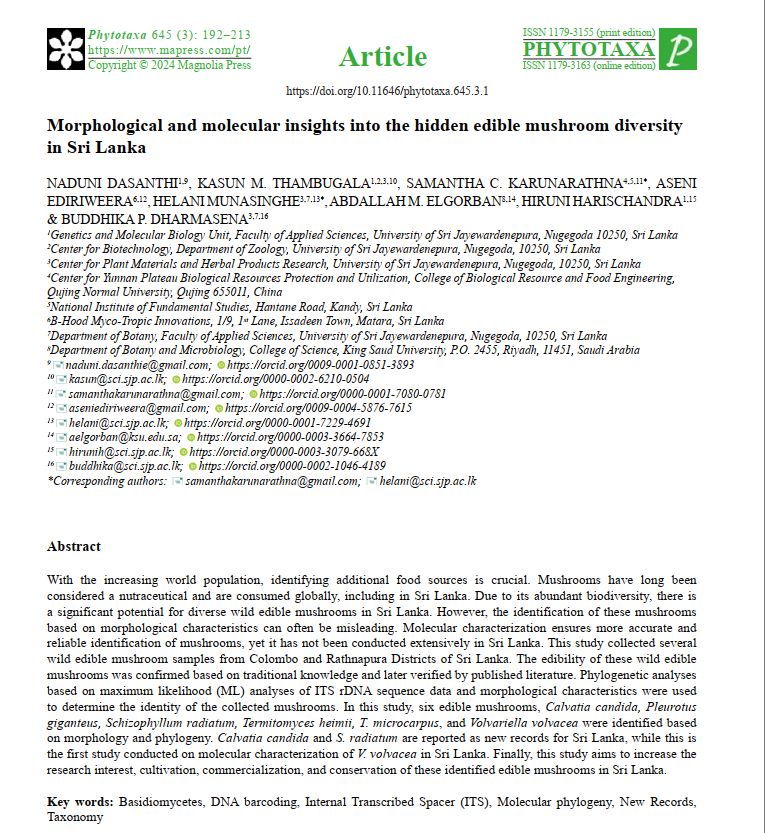With the increasing world population, identifying additional food sources is crucial. Mushrooms have long been considered a nutraceutical and are consumed globally, including in Sri Lanka. Due to its abundant biodiversity, there is a significant potential for diverse wild edible mushrooms in Sri Lanka. However, the identification of these mushrooms based on morphological characteristics can often be misleading. Molecular characterization ensures more accurate and reliable identification of mushrooms, yet it has not been conducted extensively in Sri Lanka. This study collected several wild edible mushroom samples from Colombo and Rathnapura Districts of Sri Lanka. The edibility of these wild edible mushrooms was confirmed based on traditional knowledge and later verified by published literature. Phylogenetic analyses based on maximum likelihood (ML) analyses of ITS rDNA sequence data and morphological characteristics were used to determine the identity of the collected mushrooms. In this study, six edible mushrooms, Calvatia candida, Pleurotus giganteus, Schizophyllum radiatum, Termitomyces heimii, T. microcarpus, and Volvariella volvacea were identified based on morphology and phylogeny. Calvatia candida and S. radiatum are reported as new records for Sri Lanka, while this is the first study conducted on molecular characterization of V. volvacea in Sri Lanka. Finally, this study aims to increase the research interest, cultivation, commercialization, and conservation of these identified edible mushrooms in Sri Lanka.


